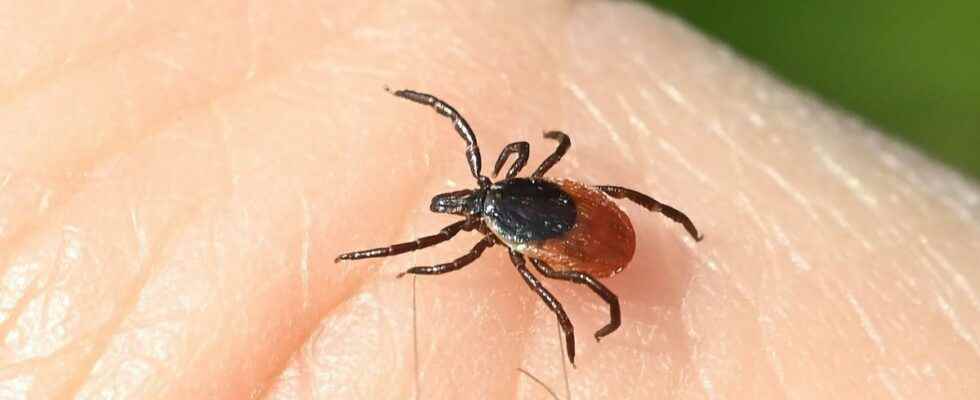Posted 5 hours ago,
Reading 2 mins.
in collaboration with
Dr Gérald Kierzek (Medical Director of Doctissimo)
Spring marks the great return of ticks. How to avoid their bites? What to do in case of a bite? The advice of Dr Kierzek, medical director of Doctissimo.
In a press release published on April 28, the Health Security Agency recalls that ticks are “particularly active in spring and fall“. Now, these pests are the “main vectors of pathogens responsible for infectious diseases in Europe”such as Lyme disease, which can lead to nerve inflammation and even paralysis.
Ticks, vectors of serious diseases
Particularly present in forests, meadows and pastures with animals (cows, horses), ticks can also bite humans in gardens.
“25% of tick bites occur in gardens”according to the Signalement Tique application developed by Inrae and the Permanent Center for Environmental Initiatives in Nancy-Champenoux.
Larvae, nymphs and female ticks are vectors of disease: they become carriers of a germ by biting an infected animal (birds, small rodents, wild boars, deer, cows, horses, dogs, cats, etc.) and transmit the bacteria to humans via their saliva.
In humans, ticks transmit the bacterium that causes Lyme disease: Borrelia burgdorferi sensu lato. Rapidly treated with antibiotics, the disease remains mild. But it can degenerate and cause serious sequelae, sometimes disabling: joint or muscle pain, neurological disorders, urinary disorders with burning and frequent urination, myocarditis, pericarditis, depression, dementia…
Ticks represent a real danger for hikers and walkers. In the event of a bite, it is recommended to immediately remove the tick using a tick remover sold in pharmacies or tweezers:
“Do not pull on the tick to remove it, but unscrew it with a tick remover and disinfect the bite. The wound must then be monitored for 30 days. If significant redness appears (erythema) or other unusual symptoms appear (fever, body aches, etc.), consulting a doctor is imperative.says Dr. Kierzek.
These early symptoms of Lyme disease may be indicative of an infection with the bacterium Borrelia burgdorferi sensu lato. “Antibiotics will then be prescribed to cure the disease.“, says the emergency doctor.
Discontinuation of treatment is suggested when the patient no longer exhibits symptoms.
Some good habits help prevent tick bites:
- Use repellents (giving preference to those with marketing authorization and respecting their conditions of use);
- In parks and gardens, avoid lying on the grass or on the ground;
- Wear closed-toed shoes and light-colored covering clothing, to better spot ticks on the surface of the fabric;
- On a walk, avoid walking in the middle of tall grass, bushes and low branches and favor marked paths.
Dr. Kierzek also recommends “inspect yourself carefully when you return from walks: hollow of the knees, head, genitals…“Ticks can attach themselves anywhere.
Finally, don’t forget to examine children, who have their heads at the height of tall grass and bushes, but also pets (cats and dogs).

